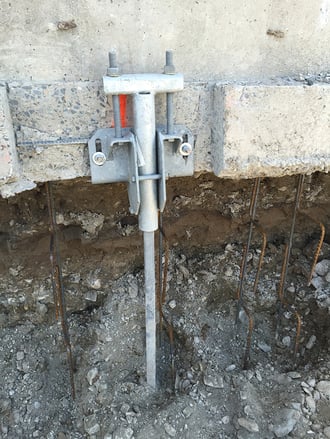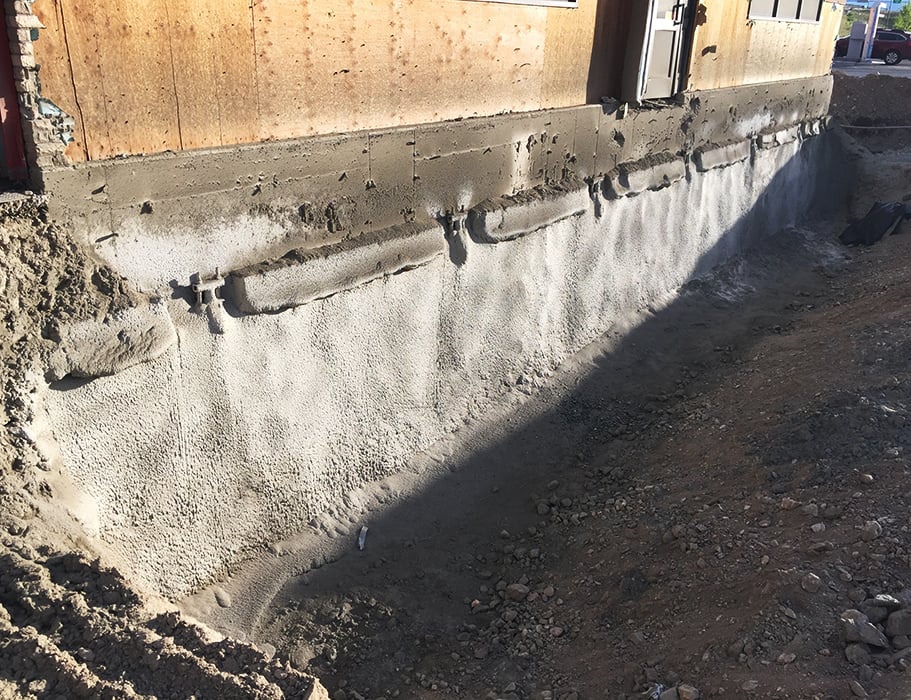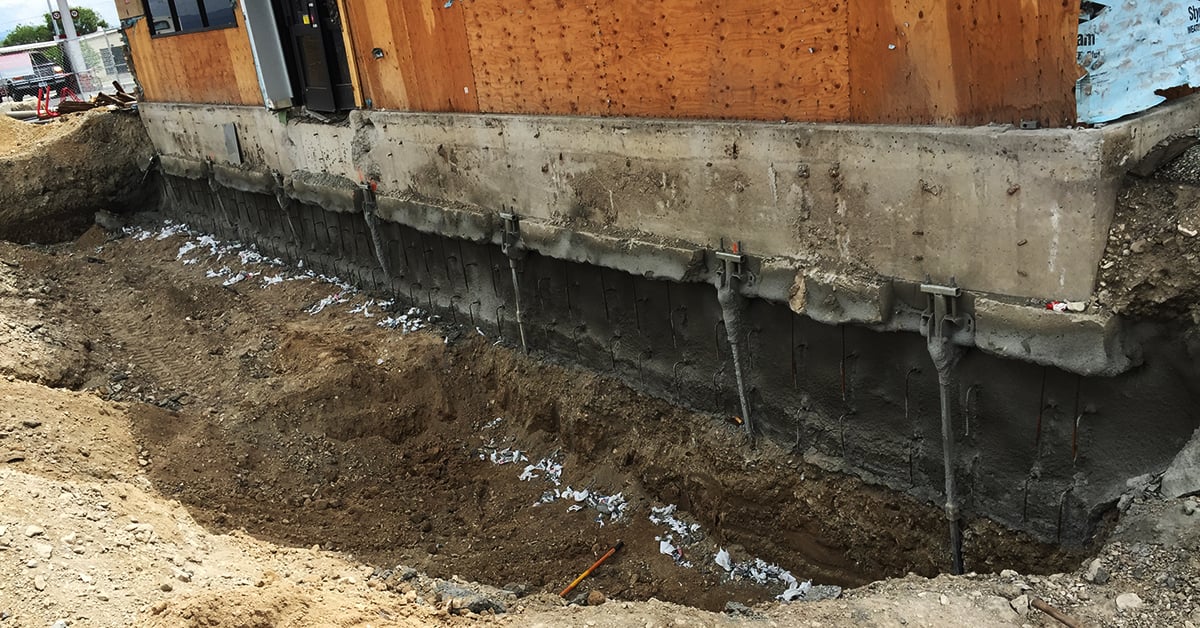A local town pump in Helena, Montana needed to expand the convenience store, which involved a basement addition and a need for a vertical cut through clay. The basement addition required the support of the existing frost wall during the excavation and concrete pour.

KLJ Engineers having previously worked with their local Chance® helical pile distributor Rocky Mountain Steel Foundations (RMSF) on other projects, reached out to discuss options for the new basement required next to an existing slab-on-grade/frost wall foundation. Ian Romain, P.E. of RMSF explains, “The unique part about this challenge was supporting the existing frost wall for the excavation to take place. This was a total vertical cut of 7 feet–you more typically see a 1 to 1 slope of the soils.” After fully assessing the structural needs of the building, it was determined that the square shaft Chance SS5 Helical Piles and Underpinning Brackets would be utilized to support the wall and allow for a vertical cut of the soils.
Square shaft piles have a high torque efficiency and is easy to install in dense or rocky soil without predrilling. This eliminates the high mobilization costs associated with equipment used to install driven piles, drilled shafts or auger-cast piles, making helical piles an ideal solution for limited access, remote location, or environmentally sensitive job sites.
The installation crew from Montana Helical Piers of Kalispell, MT, worked quickly to first prep the footing and then install each pile with a skid steer to meet the height restrictions. The helical piles installed smoothly through the clay and into gravel mix deep below. Each of the 7 helical piles were installed at a minimum of 15 feet. After the helical pile and bracket installation, the excavation began. The first 3’-6” cut of soil was made, re-bar placed and overlaid with a shotcrete facing. The remaining depth was then excavated, reinforced and overlaid to meet the total depth required for the construction of the basement foundation.
 Through a collaborative effort of KLJ Engineers and Rocky Mountain Steel Foundations, the design of the foundation support provided an economical solution and allowed for immediate loading. This solution also allowed the convenience store to maintain occupancy during the construction since there was no vibration or noise issues for the business to compete with.
Through a collaborative effort of KLJ Engineers and Rocky Mountain Steel Foundations, the design of the foundation support provided an economical solution and allowed for immediate loading. This solution also allowed the convenience store to maintain occupancy during the construction since there was no vibration or noise issues for the business to compete with.
Key benefits of helical piles:
-
-
Limited access
-
Time to install faster than concrete
-
Standard equipment for installation
-
Labor savings - smaller crews
-
Immediate loading
-
Low to no vibration/noise
If you need an innovative foundation solution for your next construction project, contact the engineering team at your local distributor for design assistance and quoting.


